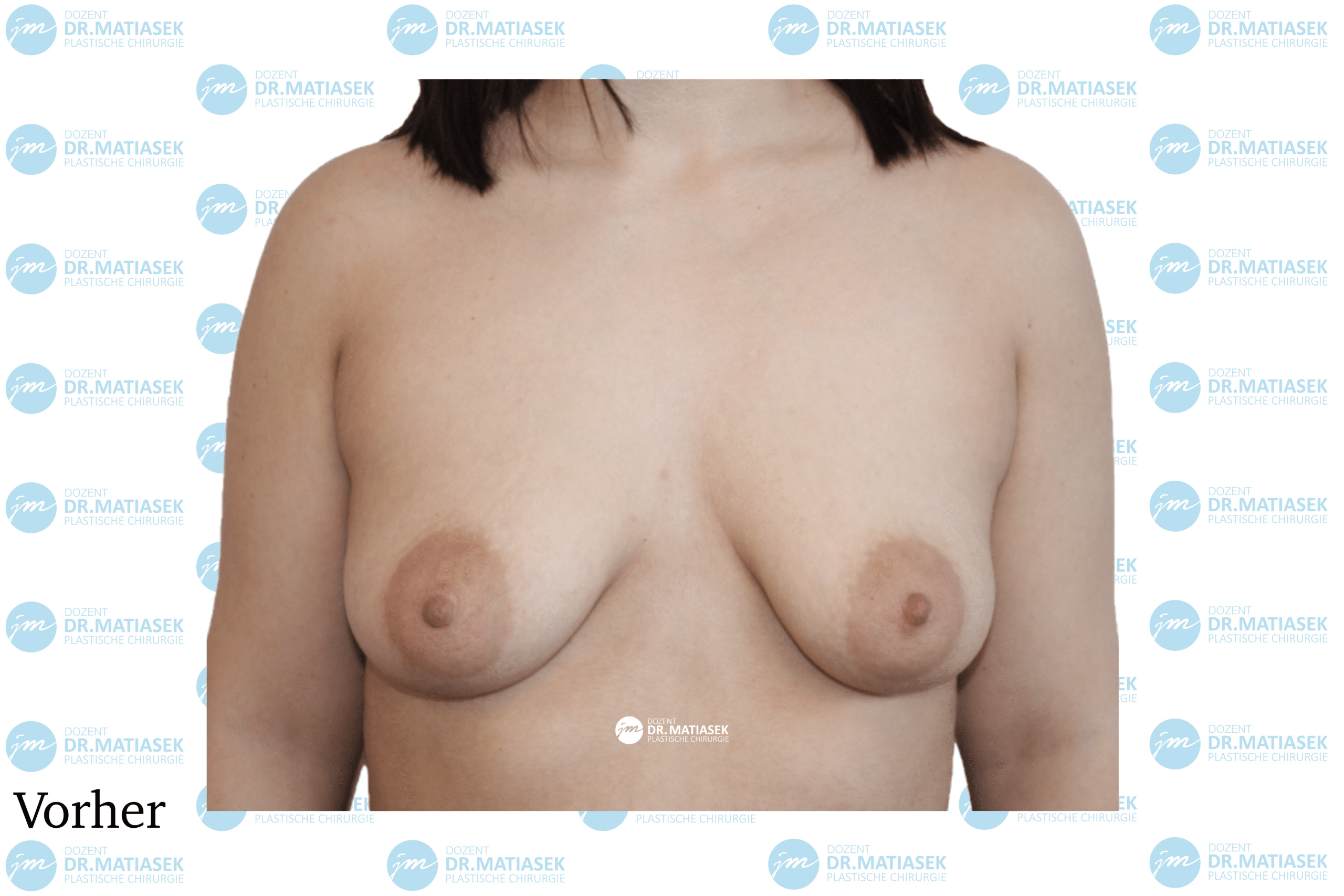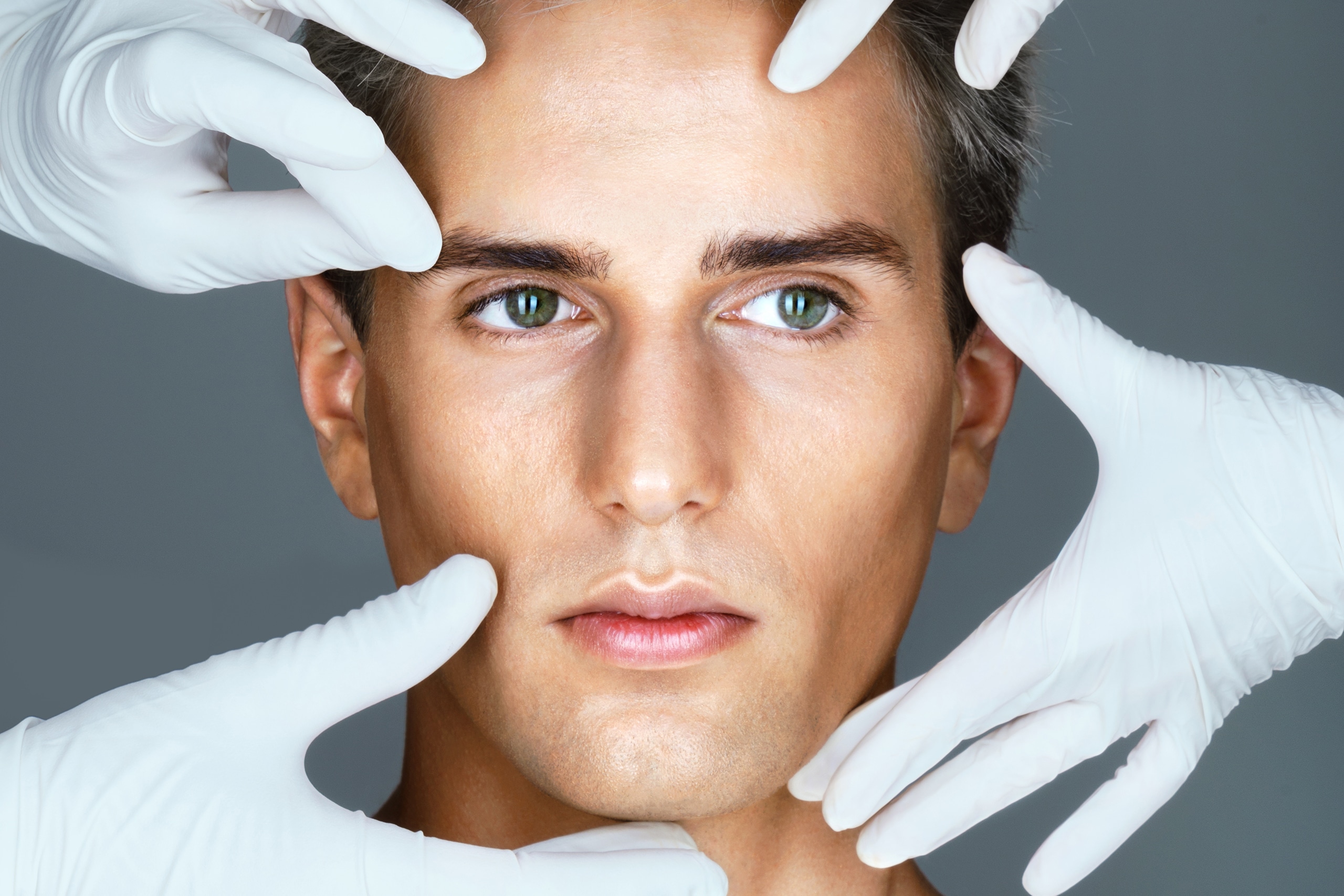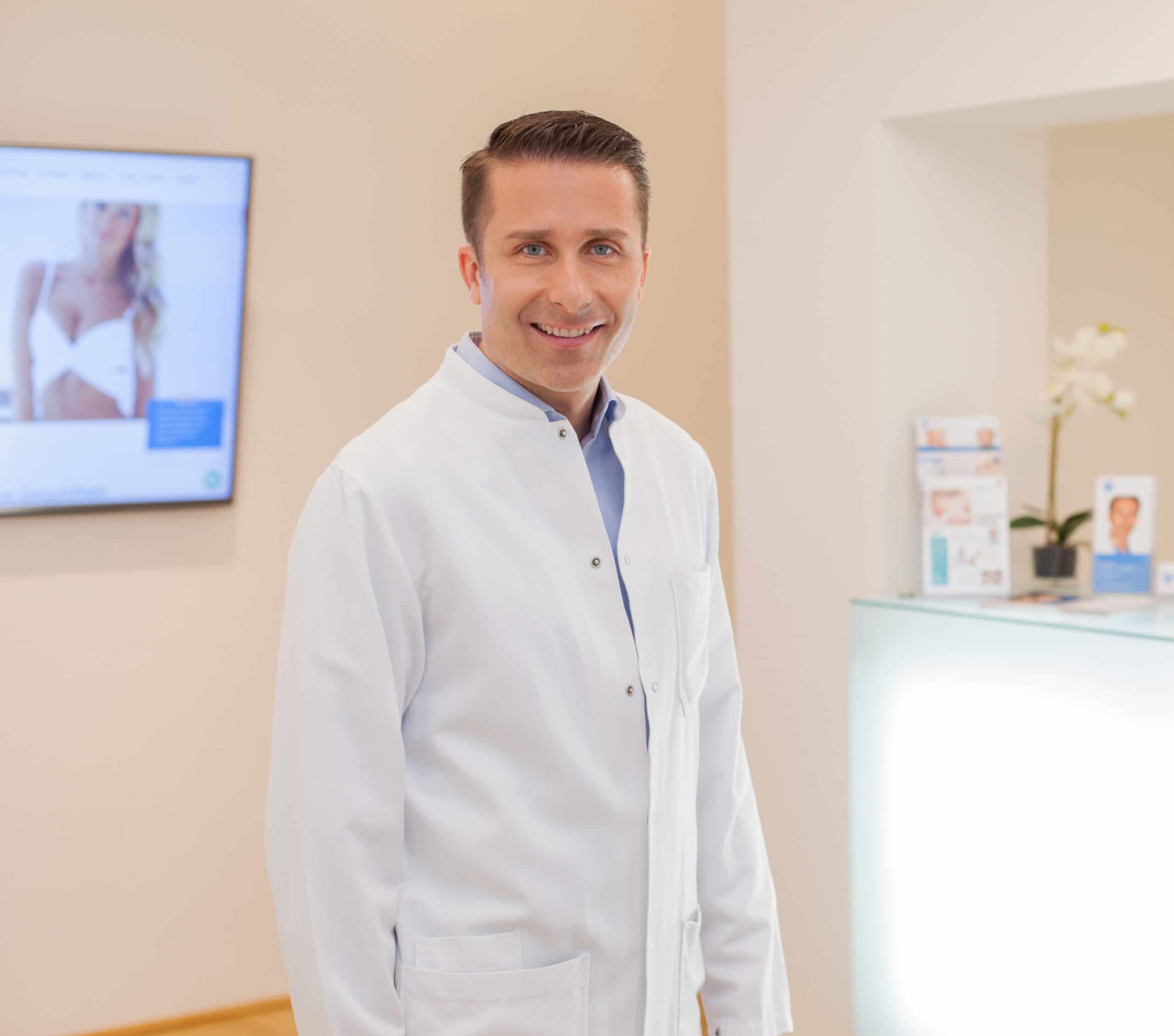Our appearance not only determines the first impression of our fellow human beings, it is also decisive for how we feel in our body and thus also how we appear and present ourselves to others. The breast is considered the most important symbol of femininity and is therefore directly related to physical well-being and factors such as self-confidence and self-esteem. It is not equally important for every woman to have full and beautiful breasts in order to feel comfortable in her own skin, but for many women breasts that are too small, sagging or asymmetrical are a factor that is associated with an inferiority complex and a high level of psychological distress . Our goal in practice Lecturer Dr. It is Matiasek to take on this psychological strain and to create the opportunity to regain improved physical well-being and positive life energy through a breast augmentation in Vienna.
Overview

Duration:
depending on the technique approx. 1-2 hours

Anesthesia:
general anesthetic

length of stay:
outpatient or 1 night

Seam Removal:
self dissolving

Healing Duration:
2 weeks, support bra for 6 weeks
What is breast augmentation?
Breast augmentation, also known as mammary augmentation, is a surgical procedure that changes the shape and size of the breast as needed. Unlike breast reduction, where breast tissue is removed, breast augmentation requires volume to be added. There are different surgical methods to achieve this, each with different advantages and disadvantages.
What are the reasons for breast augmentation?
The female breast is a secondary sexual characteristic and is considered a symbol of femininity. It is therefore obvious that many women feel uncomfortable, unfeminine and unaesthetic when the shape of their breasts changes, when they are relocated or when their breasts are too small for their body proportions. Medically, there is no need for breast augmentation surgery, the physiological function of the mammary glands is independent of size. Nevertheless, breast augmentation is one of the most common cosmetic surgical procedures, as it gives those affected the opportunity to correct a blemish that is often associated with reduced self-esteem, discomfort in their own body or even bullying and exclusion.
- Proportions of the breasts: even more than weight and body mass index, the body proportions are decisive for whether the breasts are perceived as too small or too big, or whether they are perceived as aesthetic or not. In addition to body size, the proportionality between chest and upper body circumference as well as upper body and hips are important here.
- Shape of the breasts: Breast size and shape are two factors that are directly related to each other. Breast tissue is subject to numerous changes over the course of life, which are particularly hormonal and metabolic, with both the size and shape of the breast varying. Especially after pregnancy and breastfeeding, but also as a natural aging process, changes in the breast tissue can occur, the breasts can appear smaller and less firm, the tissue can sag and the breasts sag as a result.
- Asymmetry of the breasts: Slight asymmetry in the shape and size of the breasts is normal and affects almost every woman. Incidentally, such asymmetries are not only found on the female breast, they also occur on the extremities and many paired organs in the breast. In addition, inequalities can not only occur in the course of growth and development, but that the breast tissue also varies can react strongly to hormonal fluctuations in the course of a monthly cycle. In rare cases, these asymmetries are so pronounced that they are clearly visible and are therefore perceived as annoying.
- Breast malformations: Malformations and deformations of the breast can rarely have genetic causes or arise in the context of embryonic development; (malignant) diseases of the mammary gland are much more frequently responsible. Breast cancer is one of the most common types of cancer in women and, depending on how malignant it is, can lead to deformation and ulcer-like changes in the breast. In the case of malignant tumors, tissue parts or the entire breast usually have to be removed. What remains, in addition to the burden of a tumor disease and fear and worry about whether the therapies will work, is often a significantly reduced physical well-being and sense of femininity due to the surgical procedure. A reconstruction of the operated breast can help here.

Who is breast augmentation suitable for?
In principle, breast augmentation is a way for all women who suffer from the fact that their breasts do not have the desired shape and size to put an end to the suffering. A breast augmentation should only be performed when physical growth is already complete, so the procedure is usually not performed until after 18 years carried out. It is important to me personally, as the performing plastic surgeon, that my patients have a realistic idea find out what is possible in the context of breast augmentation and what results can be expected.
Who is breast augmentation not suitable for?

- Pregnant and lactating women
- Patients with an active tumor disease
- Patients who have an acute inflammation of the breast tissue or the mammary gland
- Patients with severe metabolic, autoimmune, or cardiovascular diseases, in which the stress of an operation and general anesthesia is associated with an increased risk potential.
What should you consider before breast augmentation?
Before the operation, it is particularly important to clarify whether contraindications for the procedure and what type of breast augmentation is to be carried out. It is important to me as the doctor treating you, depending on patient request to find the best individual solution. After a detailed discussion of the course of the operation (including 3D planning with Vectra XT and Crisalix) and aftercare and the clarification of open questions, nothing stands in the way of the operation. The day before the operation, make sure not to eat too much and get enough sleep. You must be sober on the day of the operation, so you should avoid breakfast and, if possible, not drink anything. If an acute infection or fever occurs in the days before the operation, you must be contacted to clarify whether the operation can still be carried out. Depending on the preparation, anticoagulant medication must be stopped up to ten days beforehand. Whether and which medication can be taken on the day of the operation is determined in a short discussion with the anesthesiologist.
What examinations and important steps are there before a breast augmentation?
In order to be able to optimally plan a breast augmentation or the possible surgical methods, several examinations are necessary in advance:

- An inspection and accurate measurement of the breast , in order to be able to determine the size, shape and position of the breast, the proportions to the upper body and any asymmetries of the breast and nipples
- using a ultrasound examination The condition and volume of the glands and fatty tissue are determined, and any tissue changes can also be ruled out
- The measurement data collected can be used to plan the increase in volume that can be expected. In a personal consultation, it is determined whether the breast augmentation can be carried out using implant or autologous fat transfer is to be carried out, which access routes are to be chosen and, if the decision has been made in favor of augmentation by means of an implant, which shape and size are preferred
- A preoperative laboratory examination of the blood is carried out routinely in order to detect possible inflammatory processes in the body or anemia and to be able to take countermeasures if necessary
- 3D simulation with Vectra XT and/or Crisalix: What can my new breast look like after the operation?

What are the risks of breast augmentation?

Breast augmentations are routine procedures that, when performed by an experienced plastic surgeon, are usually uneventful. Nevertheless, both intraoperative and postoperative complications cannot be completely ruled out and all patients must be aware of them. The general surgical risks that can occur with practically every surgical procedure include complications that can arise as part of the anesthesia, heavy bleeding and postoperative bleeding or larger hematoma the risk of infection as well as Wound healing disorders.
Allergic reaction Allergic reactions Change of position Rotation Capsular fibrosis, scarring distortions Contractures Changing the implant Implant rupture. Sensory disturbances have become very rare thanks to high-quality implants that have been repeatedly tested for their biological compatibility; they are practically impossible in breast augmentation with autologous fat. Complications that can occur after breast augmentation with an implant are primarily changes in position and inflammatory changes that lead to capsular fibrosis. The danger of a change of position (Sliding) or one rotation of the implant is particularly high in the first hours and days after the procedure and continuously decreases as the healing progresses.
The risk of a change in position can be significantly reduced by careful surgical technique and aftercare as well as by wearing the support bra conscientiously. The most common postoperative complication is the so-called capsular contracture it is caused by an actually physiological reaction of the body to the introduced foreign body, which is encapsulated and scarred by numerous immune processes. In addition, capsular fibrosis can also result from germs introduced during the operation in the sense of a bacterial infection of the implant, with this risk being significantly reduced by using a Keller Funnel to insert the implant. In many cases, the capsular contracture is not bothersome and not visible from the outside. In advanced forms, however, the position of the implant changes and scarred distortions and contractures of the tissue, which will also be clearly visible from the outside in such cases Changing the implant performed. A complication that was feared in the past due to the danger of the occurring silicone and the associated allergic reactions is that implant rupture Thanks to the use of an adhesive silicone gel, it is no longer possible for the implant contents to leak out and spread in the breast tissue. Small tears usually do not cause any problems, larger ruptures in the capsule (e.g. in the context of an accident) lead to deformation of the implant, which then has to be replaced. In rare cases it can be caused by irritation of the smallest nerves emotional disturbances in the nipple area. For most women, however, this discomfort disappears after a while.
Which Doctors Can Perform Breast Augmentation?
Breast augmentation is the responsibility of doctors with special training plastic and aesthetic surgery.

How does breast augmentation with implants work?
In breast augmentation with implants, the volume of the breast increases by inserting special silicone pads that are modeled on the shape and feel of the female breast and are inserted through a small skin incision either under the mammary gland or the breast muscle. The first silicone implants were used in the 1960s and have undergone constant further development since then, so that the implants used today meet the highest safety and tolerability standards.
What implants are there?
Choosing the right implant is not only about the size, but also about the shape and the material:
- Implant shape: A distinction is made between round and anatomically shaped implants, where the focus here is on the shape of the base area and the volume distribution. In the case of round implants, the volume is symmetrically distributed, while anatomically shaped implants have a transversely oval surface and a slight excess volume on one side, which is based on the natural shape of the breast. In principle, both implants are possible, the choice is made primarily according to personal preferences.
- Material: When choosing the material you can choose between implants silicone and from table salt be distinguished. Silicone implants are the most commonly used nowadays, while those made from common salt are only rarely used. Their advantage is that they are a bit softer and have a better grip and that they are associated with less risk of an allergic reaction in the event of a rupture, since the table salt can be easily absorbed by the body. The disadvantage of saline implants, however, is that they lose shape and volume and therefore have to be replaced more quickly. Newer, high-quality silicone implants also consist of a cohesive gel cushion that cannot leak even in the event of a rupture.
What techniques are there for breast augmentation with implants?
The different techniques of surgical breast augmentation are based on the one hand on the choice of access route and on the other hand on the positioning of the silicone implant. There are the following options for the position of the implant:
- Positioning between mammary gland and pectoral muscle: With this technique, the implant lies a little more superficially, the shape is more visible overall and the implant can also be felt much better from the outside. Since the pectoral muscle does not have to be lifted, healing is a little faster and the post-operative pain also subsides a little more quickly in most cases. This method is more likely to be used in women who have enough glandular tissue to provide sufficient stability. Whether this is the case is discussed during the investigations and measurements as part of the operational planning.
- Positioning under the pectoral muscle: In women with very little glands and fatty tissue in the breast, the implant must be placed submuscularly, i.e. under the large pectoral muscle. The muscle is partially or completely lifted, placed over the implant and then sewn up again. A full coverage or a double layer technique can be chosen, the latter represents a combination in which about two thirds of the implant is covered by the pectoral muscle. Submuscular positioning is a bit more painful for many patients, but has the advantage that the implant fits better and the breast feels more natural.

The access route , through which the implant is inserted, decides where the incision is made and where scars can later be visible. The following techniques are possible in the access route:
- Inframammary Access: The most common access route is the breast fold, which offers the advantage that work can be carried out very precisely and with good visibility. The three to four centimeter long incision is made directly in the skin fold so that later the scar is only visible when the breasts are lifted.
- Periareolar access: The periareolar approach offers the least visible scar formation. Here the incision is made along the areola and the subsequent scar is concealed by the natural transition of the skin to the areola. The disadvantage of this technique is the increased risk of injury to the mammary gland tissue, which is why women who want to have children after the operation are advised not to use this technique, as breastfeeding can possibly have an adverse effect.
- Transaxillary Access: With this technique, the skin incision is made in the armpit, so the breast itself remains free of scars. In the transaxillary approach, a camera is projected over the main incision to the surgical site in the breast and the implant is then positioned under visual control.
- Basement funnels: With the help of the Keller Funnel, the implant is inserted using the "No Touch Technique". This allows the scar to be kept small (3-4 cm). In addition, the implant does not come into contact with skin germs, which reduces the risk of infection and subsequent capsular fibrosis.
When can I see the results of breast augmentation with implants?

It takes at least a while until the final result of a breast augmentation with implants is visible. By then, ideally, the implant should have properly grown into the tissue, the scars should have healed and the swelling should have reduced to such an extent that the shape and position of the breast can be assessed well.






How long do breast implants last?
The modern, high-quality and carefully tested implants that we use are characterized by great stability and can withstand even more pronounced loads. Overall, a durability of and more can be expected. Nevertheless, the fit and shape of the implants should be checked at regular intervals as part of follow-up examinations.
How painful is breast surgery?
The operation itself is performed under general anesthesia, so you will not feel any pain. After the operation, the entire breast tissue is swollen, reddened and very sensitive. Moderate pain and a pulling feeling are quite normal in the first few days and can be treated with painkillers if necessary.
Which implants does Dr. Matiasek?
Implants of the Motiva, Mentor, Perle, Sebbin and B-Lite or Polytech brands are given priority. Depending on the initial findings and the patient's wishes, Motiva uses round implants or Motiva Ergonmix or Motiva Ergonomix2. The innovative Perle implant is characterized by its particularly soft and dimensionally stable emunomic gel. B-Lite implants from Polytech are on average a third lighter than other silicone implants and are therefore ideal for patients who want particularly large breasts.
How does breast augmentation work with autologous fat?
Breast augmentation with autologous fat is possible if there is enough fatty tissue elsewhere that can be removed and inserted into the breast to be enlarged.
Advantages of breast augmentation with autologous fat are:

- Autologous fat as an endogenous substance does not harbor any potential risks such as allergic reactions or the development of capsular fibrosis.
- Human fat tissue is an elastic and easily malleable substance, so the result is characterized by its special naturalness.
- The method is minimally invasive, in contrast to a treatment with an implant, no incision has to be made, rather the fatty tissue is inserted into the breast with several stitches.
To the disadvantages include the following factors disadvantages:

- In fact, autologous fat treatment consists of two procedures, namely liposuction and the actual breast augmentation.
- The volume by which the breast can be enlarged is limited when treating with autologous fat. Limiting factors here are on the one hand the maximum amount of fat that can be extracted and also the maximum possible amount of transplantation, which is around one cup size.
When are the results of a breast augmentation with autologous fat visible?

It takes at least a while until the final result of a breast augmentation with implants is visible. By then, ideally, the implant should have properly grown into the tissue, the scars should have healed and the swelling should have reduced to such an extent that the shape and position of the breast can be assessed well.
How long does breast augmentation with autologous fat last?
The firmly ingrown fat cells usually hold a life long , but like normal fatty tissue, they are subject to hormonal fluctuations and weight changes. However, breast augmentation with autologous fat can also be repeated.

What do I have to consider after a breast augmentation?
After the operation, a support bra is put on, which is intended to prevent major movements or vibrations in the first few weeks after the operation and to relieve the breast tissue in order to optimally support the postoperative healing process. Be sure to rest as much as possible for the first few days after surgery, avoiding stress, excessive exercise, and heavy lifting. Avoid hot baths and sauna sessions in the first few weeks after the procedure.
Are scars visible after breast augmentation?
Whether and how severe the scars from the operation are visible depends primarily on the access route chosen for the operation. The postoperative scar is usually the least visible with the periareolar approach; with the submammary approach, the surgical scar is well concealed by the skin fold.
What should you pay attention to when caring for scars after breast augmentation?
It is normal for the scars to be clearly visible at first after such an operation. However, over time, the scars will fade so that only the fine cuts are visible. In order to reduce this as much as possible, careful scar care should be carried out, which can be started after the sutures have been removed (approx. from the 14th day). Special ones are suitable for this scar gels or scar ointments , which promote tissue regeneration of the skin. A regular, slow one rub in of the scar gels and scar ointments in the skin improves blood circulation in the tissue and promotes the elasticity of the skin, so that indentations and harder scar strands can be avoided. Get advice on this in the ordination. We mix your individual Universkin product tailored to your needs.
How long should you stop smoking after breast surgery?
In principle, it is not forbidden to smoke even after breast surgery, but you should be aware that both smoking and consuming alcohol weaken the body to a certain extent and can therefore also lead to delays in wound healing and postoperative recovery. I therefore recommend an absolute abstinence from smoking for at least two weeks.
When can you go back to work after breast augmentation?
After the operation, you should rest for about a week regard. in professions that involve little physical exertion (sedentary work), the sick leave can be ended from the second week after the operation. In the case of physically demanding professional activities, there is sometimes a longer rest period necessary.
How long should you not exercise after breast augmentation?

While light physical activities such as walks in the fresh air or those that do not strain the upper body are possible again after just one to two weeks after the procedure, extreme physical exertion and sports that are associated with increased movement of the upper body and breast tissue should be avoided. at least six weeks be waived.
When is it possible to drive again after breast surgery?
Driving and other activities that require a high level of concentration can be resumed as soon as the effects of the anesthetic wear off.
How long can you take sick leave after breast augmentation?
Only rarely, for example in the case of a breast augmentation in the case of a tumor, is the operation considered medically necessary or justified and therefore also supported by the health insurance companies. Only in such cases is sick leave paid for by health insurance. In all other cases, you should ensure that you reserve sufficient vacation time in advance to ensure you have the necessary recovery time. In cases of doubt, it is also advisable to seek advice from the health insurance companies in advance.
What is the best way to sleep after breast augmentation?

Even if it is very uncomfortable for many patients, it is advisable to sleep on your back as much as possible for the first 10 to 14 days after the operation in order to prevent the implants from slipping or too much pressure on the wounds.
Which bra is suitable after breast augmentation?
A special support bra, which is put on after the operation, must be worn for the first six to eight weeks after the operation. After the checks have been carried out and the results are satisfactory, you can switch to normal bras, but we recommend non-wired models, especially in the first few weeks, in order to avoid pressure points or injuries to the wounds.

What anesthesia is used for breast augmentation?
Both breast augmentation with implants and with autologous fat transfer are performed in general anesthetic carried out. You will be informed in advance in a personal conversation with the anesthetist about the exact procedure of the intubation and the general anesthesia as well as possible risks.
Is there a non-surgical breast augmentation?
One way to make the breast appear larger without surgery is to Training the large pectoral muscle – this does not lead to an increase in the mammary glands and fatty tissue, but to an optical lifting of the breast.
Is it better to have a breast augmentation before or after pregnancy?
In principle, breast augmentation can of course also be carried out before pregnancy, the pregnancy itself is in no way affected. However, pregnancy is always accompanied by pronounced physical changes that differ from woman to woman and cannot be assessed in advance, which is why an operation before pregnancy is not recommended if you want to have children safely and soon. Ultimately, however, the personal level of suffering decides when and how urgently the operation should be carried out. If you are very dissatisfied after pregnancy and breastfeeding, the operation can also be repeated if necessary.
Can you still breastfeed after breast augmentation?

When carried out professionally and precisely, the mammary gland tissue is not injured, so nothing stands in the way of breastfeeding.
What is the difference between a breast augmentation and a breast lift?
A breast lift is also a plastic surgical procedure. In contrast to breast augmentation (mastopexy), no volume is added, but only the existing breast glands and skin tissue are changed using different techniques in such a way that a lifting and tightening effect occurs during the operation i.e. shape and position, but not the volume of the breasts. The procedure is particularly suitable for women who, after losing a lot of weight or after several pregnancies, suffer from sagging breasts or excess skin.


How much does a breast augmentation cost?
Depending on the method and the materials used (implants), the costs for a breast augmentation start at €4,900. You are welcome to make partial payments. Ask us about zero percent financing.
What is included in the price?
- Detailed consultations (at least 2 before the procedure)
- Vectra and/or Crisalix 3D Simulation: What will my breasts look like?
- Detailed enlightenment
- Feel-good atmosphere in a beautiful setting
- surgical assistant team
- fee for anesthesia
- Trial implants (if necessary
- High-quality safe state-of-the-art implant
- Pain medication after the procedure
- Discussion with lecturer Dr. Matiasek after the procedure before discharge
- 24 hour availability after the operation
- All dressing changes and suture removal
- control appointments
Is it possible for health insurance companies to pay for breast augmentation?
Basically, a breast augmentation is not a medically necessary procedure, which is why it is not readily covered by the statutory health insurance companies. However, there are individual exceptions, such as partial or complete removal of the breast tissue after cancer or in the case of severe asymmetry, in which the health insurance companies will at least partially pay for the procedure. If anything is unclear, it is advisable to obtain information from the insurance company in advance.






